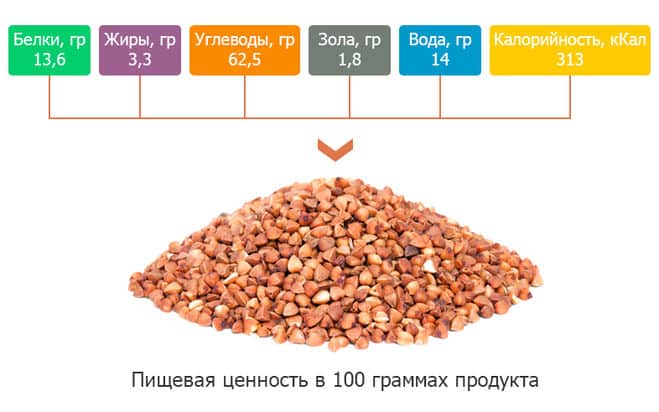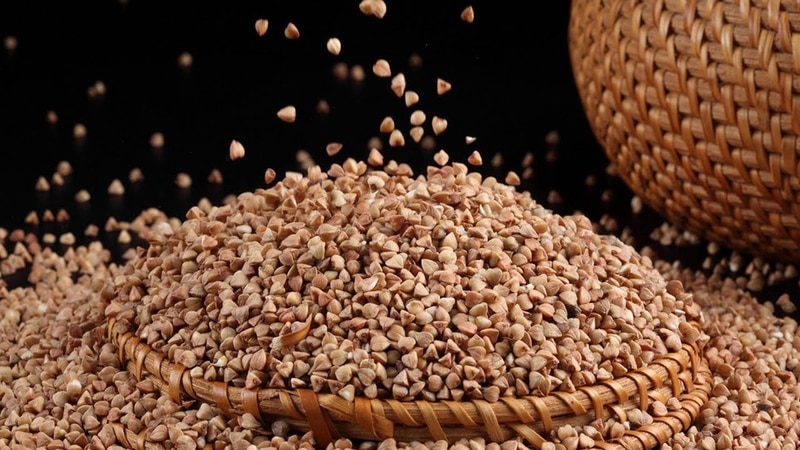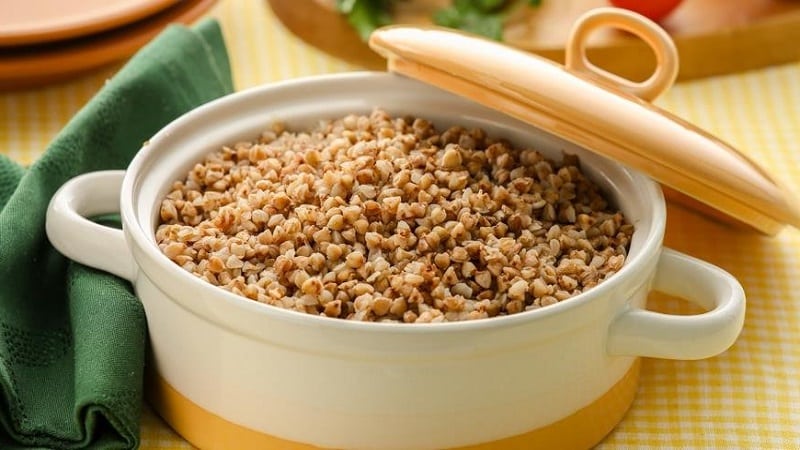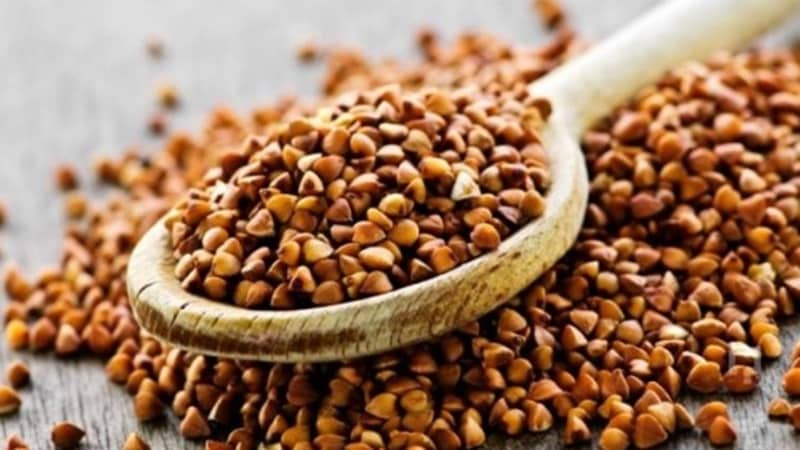Calorie content of boiled buckwheat per 100 grams
Buckwheat combines opposite properties - while sufficiently filling and nutritious, it has a low calorie content. Eating cereals is not prohibited even if you follow the strictest diets. The product is also useful for those who lead an active lifestyle and play sports. The average glycemic index of porridge places it in the group of foods allowed for diabetes. Its use does not cause sudden jumps in blood sugar.
Calorie content of cooked boiled buckwheat per 100 grams

The composition of buckwheat is so balanced that it is called the queen of cereals. The beneficial effect on the body is expressed in:
- regulation of blood sugar levels (due to the average glycemic index of 50 units);
- strengthening blood vessels (flavonoids contribute to this);
- improving the condition of the skin, teeth, hair follicles, nail plates (thanks to calcium, iron, B vitamins).
All carbohydrates contained in porridge are slow. One serving satisfies you for a long time despite its low energy value. The product contains all essential and essential amino acids. Proteins are quickly absorbed, so cereals are added to athletes’ diets to speed up muscle recovery after training.
Reference. The calorie content of 100 g of raw buckwheat is 305 kcal, which is less than any other type of cereal. For example, the caloric value of rice is 340 kcal, wheat cereal - 334, corn - 325.

Energy value of buckwheat varieties (kcal per 100 g):
- food grain - 290;
- done - 306;
- green cereals - 308;
- core - about 313;
- cereal - 330.
In green buckwheat, the kernels are separated from the grain husk, but are not thermally processed (not fried). The product retains all valuable substances and is recommended by nutritionists as the most beneficial for consumption.
Mineral and vitamin composition of cereals: calcium, potassium, iron, sodium, phosphorus, magnesium, sulfur, vitamins A, C, B1, B2, B6, B9, PP, E, beta-carotene.
On water without salt

Although calorie content of buckwheat in its raw form it seems high, but with heat treatment the indicator decreases almost 3 times. This is explained by the ability of cereals to absorb liquid. During evaporation, the grains significantly increase in volume, thereby reducing their calorie content.
The energy value of the product varies depending on the processing method and flavoring additives.
Buckwheat, cooked only on water, without seasonings and salt - the most dietary option preparations. To do this, the grains are boiled in a large amount of water. When the kernel swells to its maximum size, the remaining water is drained. The calorie content of such porridge is approximately 90 kcal per 100 g.
When evaporating, the product retains slightly more calories (105 kcal per 100 g) than when boiling, since less liquid is consumed.
With salt
Although a pinch of salt itself does not contain calories, when it is added during cooking, the energy value of the finished dish increases by about 10 kcal. This happens because the cereal absorbs slightly less liquid.
Reference. Boiled buckwheat in water with salt has a calorie content of 100 kcal.
If you add oil to the porridge, the energy value will increase significantly, and such a product cannot be called dietary.100 g of boiled buckwheat with a spoon of vegetable oil contains 150 kcal, with a spoon of butter - 170.
Nutritional value of 100 grams of boiled buckwheat with and without salt

The classic way to prepare the dish is simple. Cereals and water are taken in a 1:2 ratio, where buckwheat is 1 part, liquid is 2 parts.
Nutritional value of 100 g of boiled buckwheat in water without salt:
- 4.2 g of protein (5.6% of daily intake);
- 21.3 g carbohydrates (5.8%);
- 1.1 g fat (1.3%);
- 0.3 g fiber (1.2%).
How many calories are in 100 grams of boiled buckwheat without salt? 110 kcal, which for an adult is 4.4% of the daily intake. If you add a pinch of salt to this porridge, the value will increase to 120 kcal.
Read also:
How to eat buckwheat during poisoning and can it cause it?
Is it possible to eat buckwheat if you have type 2 diabetes?
Life hacks for Cinderellas: how to quickly separate rice from buckwheat
Conclusion
Buckwheat proteins are quickly absorbed, so it is often eaten during diets and added to the diet as a source of additional protein and a meat substitute. With a high calorie content in its raw form, boiled cereal without salt contains only 90–110 kcal (depending on the method of heat treatment).
At the same time, it is better not to eat only one buckwheat, despite the popular mono-diet. The product will be valuable and useful only as part of a varied menu: in order to satisfy the body’s energy needs, it is important to eat a balanced diet, observing the ratio of proteins, fats and carbohydrates.